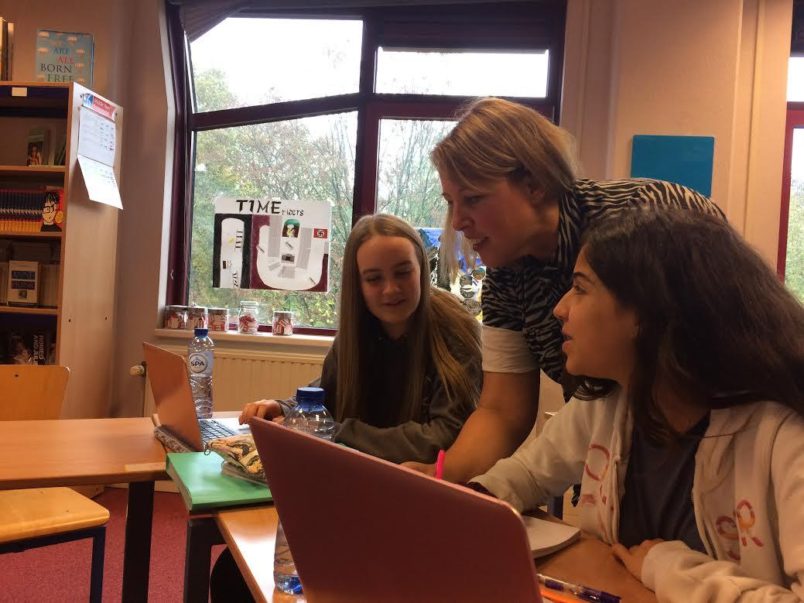Stories that Move
The online toolbox about diversity and discrimination
 English
EN
English
EN
 EnglishEN
EnglishEN DeutschDE
DeutschDE NederlandsNL
NederlandsNL MagyarHU
MagyarHU PolskiPL
PolskiPL SlovenčinaSK
SlovenčinaSK УкраїнськаUK
УкраїнськаUK EspañolES
EspañolES CatalàCA
CatalàCA
During my varied journey through education I learned very early on that words have inherent power. They lure all of us to sunbathe in their beam, and change politics, people or purpose. For each of us, words have stories attached to them; sometimes based on our culture, sometimes on our gender, but always tied to our identity.

Shannon Hancock working with two ISA students on Stories that Move
I have been an upper school classroom teacher for 21 years, educating young people on three continents, in public, private and international schools. Both social justice and the power of the voice to move an audience have been at the heart of my classroom mission. I believe that every student can learn and every student has the potential to bring about positive change in the world.
Testing Stories that Move at the International School of Amsterdam
Recently, I have become involved in an inspiring project: Stories that Move. This is a curriculum to promote critical thinking, open discussion and experiential sharing among young people across Europe on the issue of discrimination. By integrating digital tools and offline assignments, the project taps into the increased use of internet, laptop and phone technology to engage learners in classroom content. The International School of Amsterdam (ISA), an International Baccalaureate (IB) school with 45 countries represented in its student body, has been a good fit for testing the content, methodology, and look and feel of the platform with teachers and students.
On both LCD and laptop
Our tests have shown that both an LCD projector + hand-outs and a 1:1 laptop environment are viable options for working with Stories that Move. Our 8th grade testers are highly skilled online learners from around the world, and at ISA we have 18-20 students per classroom. In 2015 our students and teachers tested the materials using paper printouts and one LCD projector/beamer. In 2016 we used a 1:1 laptop environment for the lessons. Being able to use both techniques offers schools the flexibility of choice.
Rich and open discussion
During the tests we found that our students were engaged in the activities and that the discussions were rich and open. One learner remarked: “The tool is a nice way of uncovering complexity within our way of thinking and judging. I liked how we looked at prejudices and how it affects how we see people and the world around us.” Students did find it difficult that the lessons are based on sharing their answers. As one student put it: “I don’t think everyone should know about your personal choices, and some things should be kept private. Some people do not want to reveal their personal thoughts or opinions.” Our feedback to the Stories that Move creators will help further improve the online learning tool.
The time is now
It is clear that we need to discuss true acceptance of diversity with our young people. The world is holding its breath as many important elections are due take place across Europe. Globalisation and the recent major migrations around the world have changed the world’s ethnic landscape. There is palpable tension, and teachers are looking for strong tools to guide their students in these important discussions. Many educators that I know around the world worry that the world is facing potential policies that contrast sharply with human rights. It seems that there has never been a more important time to discuss and further understand discrimination – past and present – and to have an online toolbox to guide our students towards both empathy and empowerment.